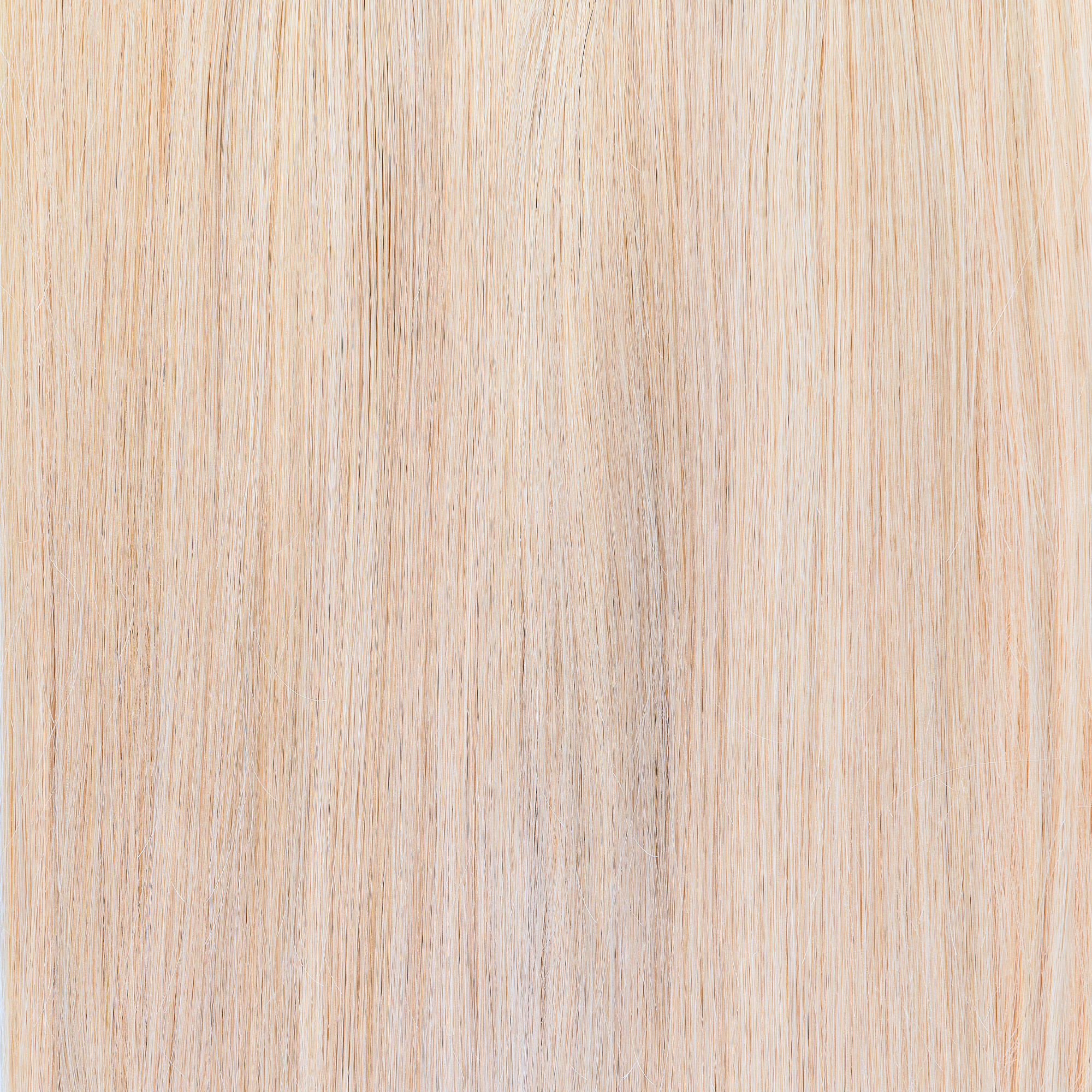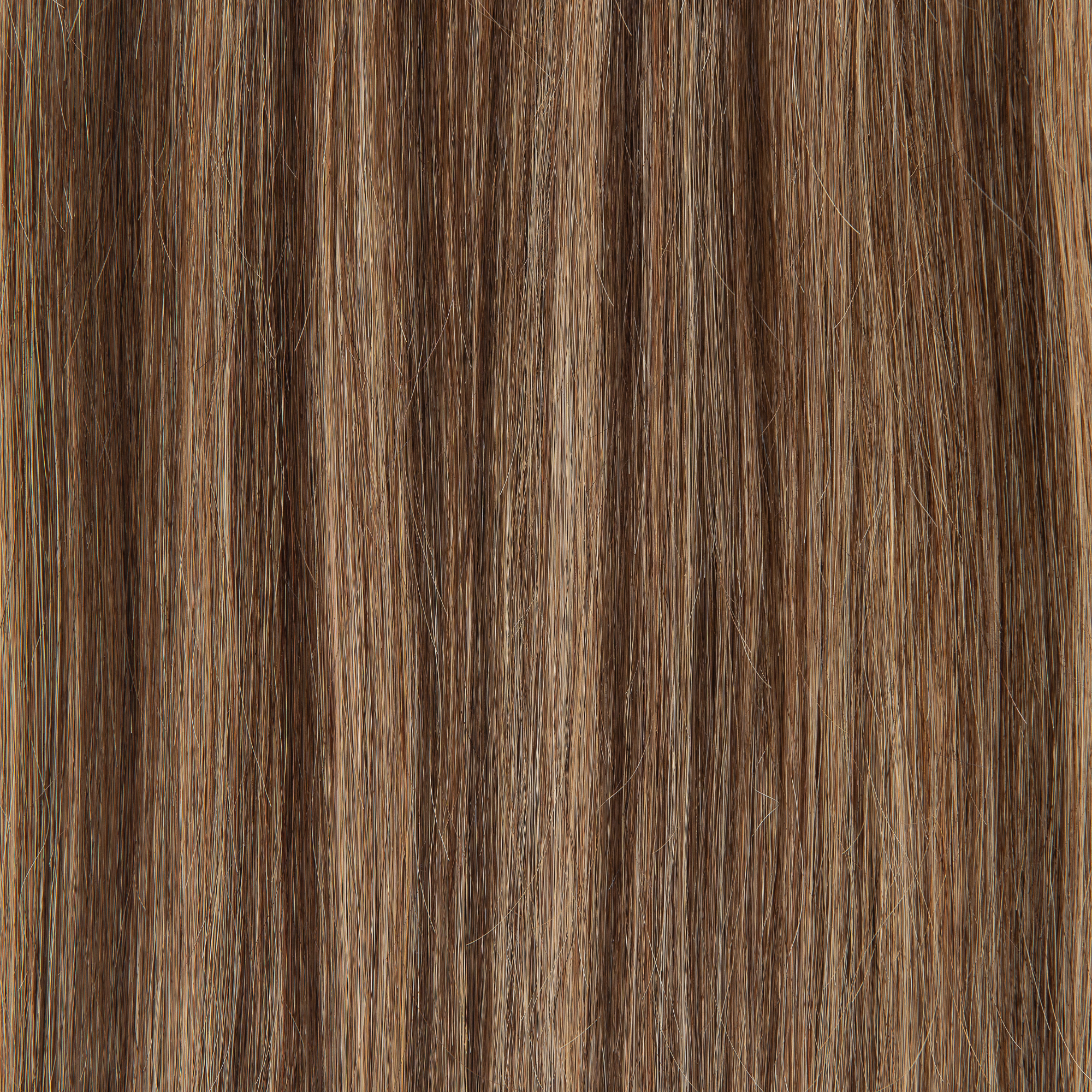
Protecting Your Hair: Tips for Using Heat Tools with Extensions
- Irene GilmanToday, we're tackling the essentials of protecting your hair while using heat tools with extensions, ensuring your locks remain as healthy and vibrant as you envision.
Is It Safe to Use Heat Styling Tools on My Hair Extensions?
The pressing question: Can you use straighteners on hair extensions? The answer is yes, but with an important note. It's safe to apply heat to extensions, provided they are crafted from 100% human hair, like those available from Atelier Hair Extensions. Unlike synthetic options, human hair extensions can endure heat, enabling you to straighten, curl, and style as desired.
However, can you straighten synthetic hair extensions? This is where caution is advised, as synthetic materials can suffer from melting due to heat. The debate on can you use heat on synthetic hair extensions often leads to mixed advice. While some synthetic extensions are labeled as 'heat-friendly', they typically tolerate much lower temperatures than human hair extensions.
Selecting the Right Heat Tools for Hair Extensions
When it comes to heat styling tools for your hair extensions, the material of the tool's plates plays a crucial role in how your hair is treated. Here's a quick guide on the differences between ceramic, tourmaline, and titanium, helping you choose wisely.
Ceramic

Ceramic tools provide even heat distribution and maintain a consistent temperature, reducing the risk of overheating and damage. They are perfect for human hair extensions, promoting smoothness and reducing frizz with their gentle heating.This makes them an excellent choice for those wondering, can you use straighteners on hair extensions?
Tourmaline

Tourmaline-coated tools emit negative ions and far-infrared heat, sealing in moisture and reducing static for smoother, shinier extensions. They're great for enhancing the appearance of damaged or color-treated extensions by minimizing further harm during styling.
Titanium

Titanium plates heat up quickly and can reach higher temperatures, suited for thick, coarse extensions that require more heat. However, their intense heat means they should be used cautiously, with a preference for models featuring adjustable temperature settings to avoid overheating.
Hot Air Brushes

Wondering if you can use hot air brushes on extensions? The answer is yes! Hot air brushes, often with ceramic or tourmaline coatings, offer the dual benefits of drying and styling, reducing overall heat exposure. They're a safe bet for extensions, especially when used on a lower heat setting.
Choosing the Perfect Temperature
When styling your extensions, the key rule is to minimize heat exposure. Choose a lower temperature on your styling tools, ideally between 250-350°F (120-177°C), to protect the hair's integrity. This temperature range is adequate to achieve your styling goals without harming your extensions.
Top Heat Protectant Recommendations
Incorporating a quality heat protectant into your styling regimen is crucial for defending your hair and extensions against heat damage. This is especially important when considering the question, can you straighten curly hair extensions? With the right protectant, you can safely style your curly extensions without fear of damaging them. Here, we've curated a selection of high-end and budget-friendly products, complete with insights on how they help prevent heat damage.
High-End Pick
-
Moroccanoil Protect & Prevent Spray

This high-end option acts as a shield against heat by infusing hair with Argan oil and vitamins. It not only protects against the damaging effects of heat styling but also works to neutralize free radicals and protect hair color from fading for those seeking to maintain their hairstyle while ensuring their hair remains hydrated and less susceptible to heat damage.
Budget-Friendly Option
-
CHI 44 Iron Guard Thermal Protection Spray
CHI's offering provides a budget-friendly barrier against heat damage with its formula that doesn't weigh down hair. It's enriched with vitamins and proteins to fortify hair from the inside out, ensuring that your styling tools glide smoothly without causing breakage or damage.
Common Mistakes Damaging Your Clip-In Extensions
When it comes to maintaining the integrity of your clip-in hair extensions, especially when using heat, there are several common practices that might be causing more harm than you realize. Identifying and avoiding these mistakes can significantly extend the lifespan of your extensions and keep them looking as lush and vibrant as the day you got them.
Overlooking Heat Protectant
Failing to apply a heat protectant before styling is a critical oversight. Heat protectants form a barrier that minimizes damage from direct heat, yet it's often forgotten or skipped in the rush of styling. This simple step is crucial for preserving the health of your extensions.
Using Excessive Heat
Setting your styling tools to their highest temperature can cause irreversible damage to your extensions. Human hair extensions can withstand heat, but excessive temperatures can lead to dryness, breakage, and color fading. Always opt for the lowest effective setting to achieve your desired style.
Heat Styling Too Often
Regularly using heat tools on your extensions can lead to cumulative damage over time. The constant exposure to high temperatures can make hair brittle and increase shedding. To avoid this, limit heat styling to special occasions or when absolutely necessary.
Forgetting to Detangle Before Styling
Attempting to style your extensions without detangling them first can lead to unnecessary tension and pulling. This not only makes styling more difficult but can also cause the extensions to weaken and break. A gentle brush through with a suitable detangling brush or comb can prevent this.
Direct Heat Application on Base of Weft
Applying heat directly to the areas where extensions are attached can weaken the bonds and cause the extensions to slip or fall out prematurely. Always start styling a few inches away from the roots to protect the attachment sites.
By being mindful of these common mistakes and adopting healthier styling habits, you can ensure that your clip-in hair extensions remain in top-notch condition, allowing for endless styling possibilities without the compromise
F.A.Q's
Yes, you can straighten hair extensions, but it’s important to use the right techniques and tools to prevent damage. Always apply a heat protectant spray before using a flat iron or straightener, and make sure to use a low to medium heat setting. High heat can cause damage, especially if the extensions are made of synthetic fibers. If your extensions are human hair, they can tolerate more heat, but caution is still necessary to maintain their longevity and shine.
To safely use heat tools on hair extensions, always start by applying a heat protectant. This creates a barrier between the heat and the hair, reducing the risk of damage. Use heat tools sparingly and avoid direct heat near the clips or bonds to prevent weakening the attachment points. Additionally, opt for ceramic or tourmaline heat tools, as they distribute heat more evenly and reduce the risk of hotspots that can damage both your natural hair and extensions.
Yes, you can curl human hair extensions just as you would with your natural hair. Since human hair extensions can withstand heat, they are ideal for styling with curling irons or wands. To ensure the curls hold well and to avoid damage, apply a heat protectant before styling, and use a curling iron with adjustable heat settings. Start with a lower temperature and gradually increase if needed, but avoid excessive heat to keep the extensions looking healthy and vibrant.
When using a flat iron on hair extensions, ensure the extensions are completely dry before styling to avoid heat damage. Set the flat iron to a low or medium heat setting and work in small sections to achieve even results. It’s also important to avoid passing the flat iron multiple times over the same section of hair, as this can cause unnecessary heat exposure. After straightening, use a light, non-greasy serum to add shine and tame any flyaways.
To maintain the quality and lifespan of your hair extensions, it’s best to limit the use of heat tools to a few times a week. Frequent use of heat can lead to dryness and split ends, especially with synthetic extensions. If you regularly use heat tools, consider deep conditioning your extensions once a week to restore moisture and prevent damage. For human hair extensions, a lower heat setting and occasional use are recommended to keep them looking fresh and healthy.









